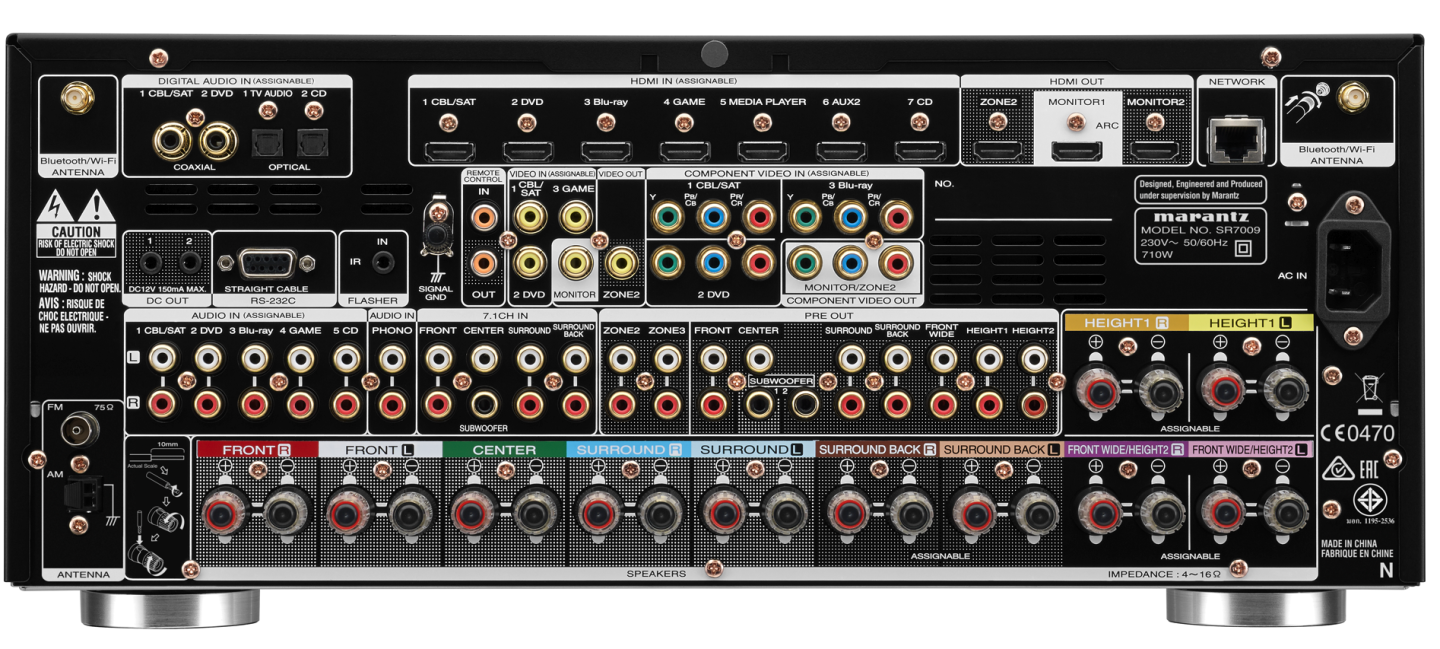A couple of months ago, Dolby announced that its Atmos surround sound format was making the move from cinemas to home theaters. Marantz introduces one of the first home theater receivers to support the format, paving the road to the future of surround sound.
Dolby Atmos takes surround sound far beyond the 5.1 and 7.1-channel systems common in home theater. It supports up to 64 speaker outputs to create a more lifelike, three-dimensional sound field. Sound doesn't come from a handful of channels in the real world; it comes from specific, pinpointed sources. Atmos attempts to mimic this type of natural, localized sound, replacing sound channels with what Dolby calls "audio objects."
"Any sound heard in a movie scene – a child yelling, a helicopter taking off, a car horn blaring – is an audio object," Brett Crockett, Dolby's director of sound research, wrote in a June blog post. "Filmmakers using Dolby Atmos can decide exactly where those sounds should originate and precisely where they move as the scene develops."
"Thinking about sound in this way eliminates many of the limitations of channel-based audio," Crocket continued. "In a channel-based system, filmmakers have to think about the speaker setup: Should this sound come from the left rear surrounds or the left side surrounds? With Dolby Atmos, filmmakers just have to think about the story: Where is that yelling child going to run? The Dolby Atmos system, whether in the cinema or a home theater, has the intelligence to determine what speakers to use to precisely recreate the child’s movement in the way the filmmakers intend."
Of course, a new technological specification usually means one thing: new (probably expensive) equipment. The "outdated" home theater hardware that folks have at home certainly won't support Atmos, so those wishing to unleash the power of the new format will need to overhaul their home theaters. Dolby suggests that current Blu-ray players should work since it's building Atmos into the existing Blu-ray specification, but the Blu-ray player is really the least of one's worries, what with much more expensive home theater receivers and speakers to think of.
The Marantz SR7009 is one of the first home theater receivers with Atmos capability. The receiver packs a 9.2-channel output configuration that can support a variety of Atmos speaker layouts. Marantz lists the supported layouts as 5.1.2, 5.1.4, 7.1.2, 7.1.4 and 9.1.2. The third number is certain to be unfamiliar to those that are used to the traditional number of channels-dot-low frequency/subwoofer surround sound format. It relates to the number of supported overhead speakers, so the 7.1.4 layout equates to seven channels, a subwoofer/low frequency output and four overhead speakers.
A little asterisk in Marantz's press release brings one to an explanation that those wishing to set up 7.1.4 and 9.1.2 systems (i.e. systems that require 11 total speakers) will need a separate power amplifier to do so. This is notable because Dolby's information recommends four overhead speakers for the best experience.

The SR7009 packs 125 watts per channel and has 11.2-channel signal processing and 13.2-channel pre-out capabilities.
For those that don't want speakers dangling from the ceiling (read: spouses of sound-obsessed home theater enthusiasts everywhere), Dolby has said that manufacturers will soon offer Atmos-enabled speakers that fire sound upward, creating the experience of an overhead sound field from the ground. Those speakers will be offered in full speakers with both front- and up-firing drivers and as add-on modules that augment existing front-firing speakers with up-firing capabilities.
The idea of ground speakers that create the feel of overhead sound seems quite similar to front speakers that use special acoustic technologies to create a surround sound-like experience without the need for rear speakers. How effectively the Atmos-enabled speakers will be able to mimic actual ceiling-mounted speakers remains to be seen (or, more accurately, heard).
In addition to its Atmos capabilities, the SR7009 includes a variety of other notable features. The receiver's integrated Wi-Fi and digital music player allow streaming from your personal digital music, vTuner Internet radio and services like Pandora and Spotify. On the video side, it offers eight HDMI inputs, three HDMI outputs, and 1080p and 4K video upscaling.
The SR7009 will launch next month for US$1,999. For those that don't need Dolby Atmos, Marantz will also introduce the $1,299 SR6009, which offers many of the same features minus the Atmos. Movie titles with Dolby Atmos are expected to start hitting the market during the Northern Hemisphere autumn.
Speaker junkies that love adding fire power to their home theater systems may want to wait for other Atmos-compatible receiver announcements. Dolby teased that one manufacturer is preparing an Atmos receiver with 32 channels.






